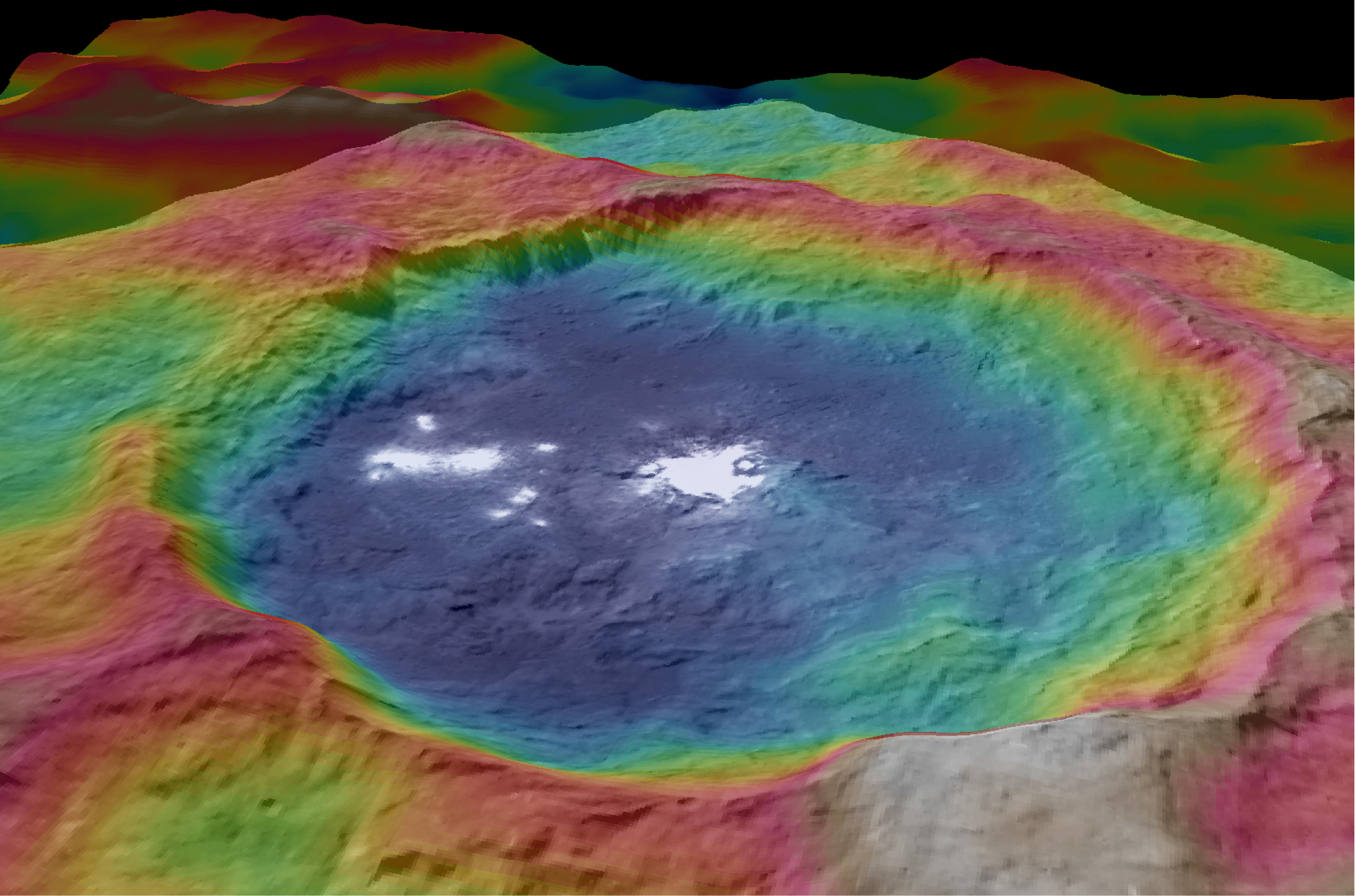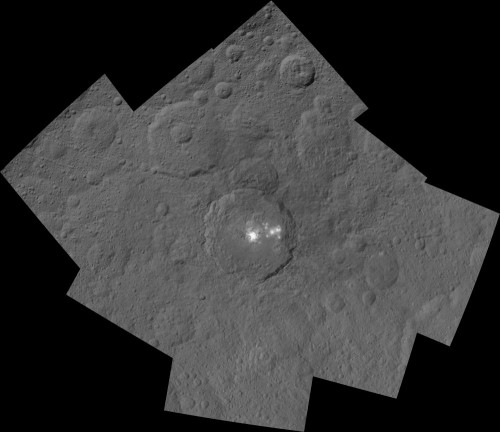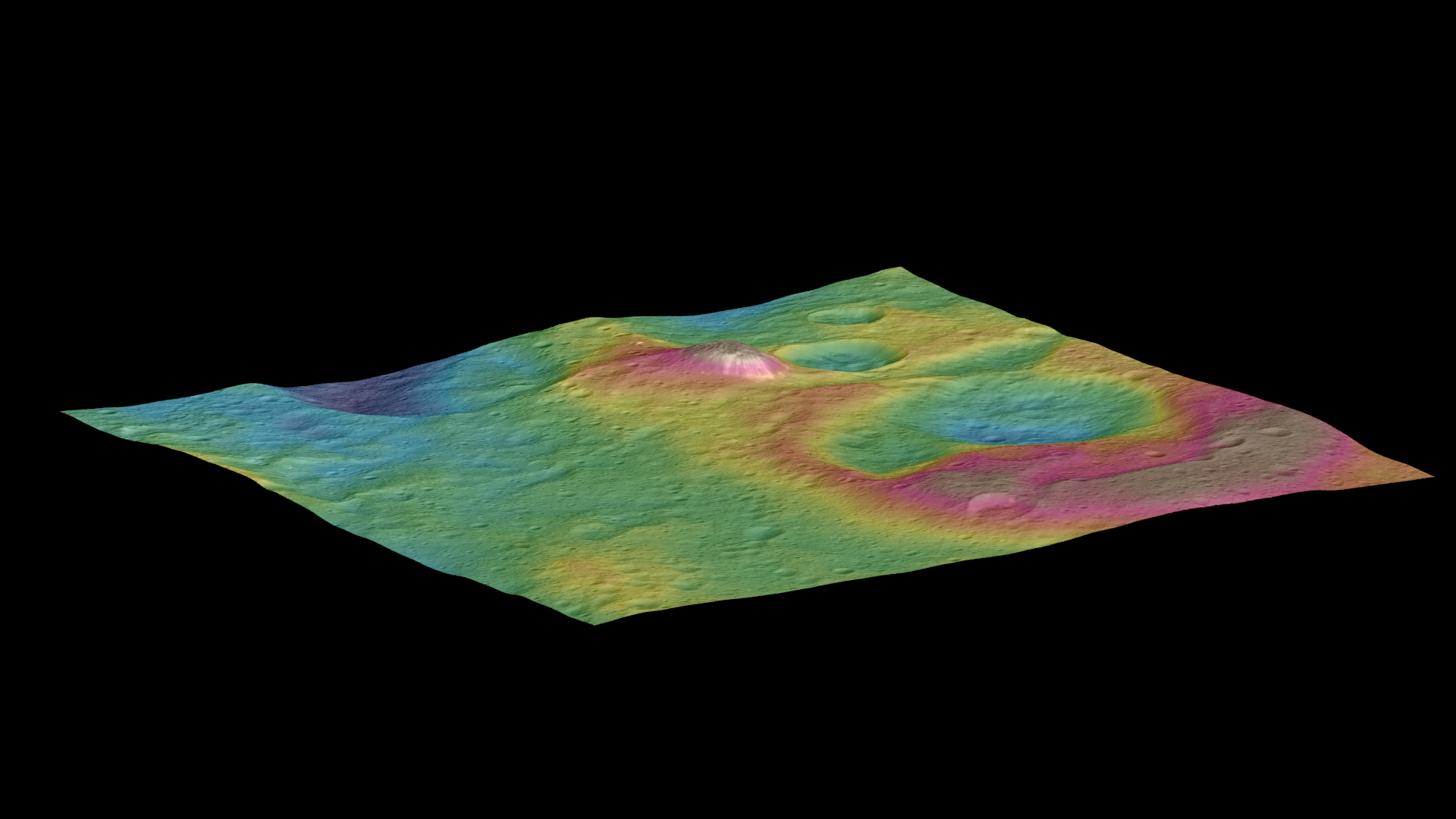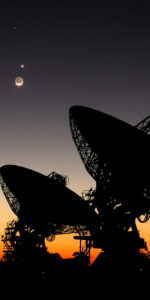
While another mission to a dwarf planet (New Horizons) captured the attention of the world this summer upon its arrival at Pluto, NASA’s Dawn mission quietly proceeded, returning data and striking images from another largely unknown world, the dwarf planet Ceres. NASA announced that the spacecraft is currently descending to its terminal orbit, the Low Altitude Mapping Orbit (LAMO). From this vantage point the spacecraft will be able to observe details of Ceres up close at an unprecedented resolution. From this altitude, Dawn’s science team hopes to learn more about Ceres’ mysterious, puzzling surface features.
Dawn On Its Way To Fourth And Last Orbit
NASA stated that Dawn began firing its ion engine on Oct. 23 to make its transition to its fourth and final orbit. The spacecraft utilizes an innovation ion propulsion system, and is one of the first kinds of spacecraft to do so. Dawn, along with its ion propulsion system, was designed by Orbital ATK; the propulsion system has been slowly but steadily inching Dawn closer to its destinations (which also included the asteroid Vesta, reached in July 2011) since shortly after its launch aboard a Delta II launch vehicle from Florida’s Cape Canaveral Air Force Station in September 2007. Dawn is also the first spacecraft in history to orbit two distinct extraterrestrial targets.

From its new orbital “home,” Dawn will be able to transmit images at a resolution of 120 feet (35 meters) per pixel, showing the terrain of Ceres in even more detail. NASA stated that a place of “particular interest” continues to be the Occator crater, which contains the infamous, mysterious “bright spots” captured in several images.
Dawn’s Rich Scientific Harvest
Dawn has already returned a scientific “feast” since its arrival at Ceres in March of this year. In September, NASA divulged that more insights concerning Dawn’s findings were discussed at the European Planetary Science Conference in Nantes, France. During its HAMO orbit, Dawn was able to extensively map Ceres.
NASA revealed: “A new color-coded topographic map shows more than a dozen recently approved names for features on Ceres, all eponymous for agricultural spirits, deities and festivals from cultures around the world. These include Jaja, after the Abkhazian harvest goddess, and Ernutet, after the cobra-headed Egyptian harvest goddess. A 12-mile (20-kilometer) diameter mountain near Ceres’ north pole is now called Ysolo Mons, for an Albanian festival that marks the first day of the eggplant harvest.”
In addition, another map of Ceres revealed the dwarf planet’s topography, as well as topographic images of Occator and of a “lonely mountain” estimated to be four miles high. Carol Raymond, Dawn’s deputy principal investigator at NASA’s JPL in Pasadena, Calif., enthused: “The irregular shapes of craters on Ceres are especially interesting, resembling craters we see on Saturn’s icy moon Rhea. They are very different from the bowl-shaped craters on Vesta.”
It was also revealed that Dawn’s gamma ray and neutron spectrometer detected “three bursts of energetic electrons that may result from the interaction between Ceres and radiation from the Sun.” This unexpected observation is still being investigated by Dawn’s science team.
In early September, a NASA JPL video showed a “3D Cruise” over Ceres’ surface, giving the observer the “feel” of flying over the dwarf planet. This video showed the enigmatic “bright spots” puzzling scientists and the “lonely mountain.” It is not known to scientists why there is one tall mountain located seemingly in the middle of nowhere, presenting a challenge. In addition, the bright spots continue to be a source of curiosity.
A previous AmericaSpace article underscored the ongoing mystery. In that article, Dawn’s principal investigator at the University of California in LA, Chris Russell, was quoted: “We are now comparing the spots with the reflective properties of salt, but we are still puzzled by their source. We look forward to new, higher-resolution data from the mission’s next orbital phase.” It is not believed these spots are due to ice. It is hoped further observations during LAMO will aid the team further in determining the spots’ origins.
Descending To A Deeper Understanding Of Ceres
The ion engine firing marks the end of observations from the High Altitude Mapping Orbit (HAMO), which the spacecraft reached on Aug. 17. This was the third orbit made by Dawn at Ceres, and it returned images and data from an altitude of 915 miles (1,470 kilometers). The LAMO orbit will take Dawn to an altitude of 230 miles (375 kilometers) above Ceres. Dawn is expected to reach LAMO in mid-December.
Dawn’s mission is poised to end in mid-2016, with the spacecraft expected to stay in orbit indefinitely around its final–and most surprising–destination. Dawn’s chief engineer and mission director Marc Rayman wrote last year, “Long after you and I and everyone else involved in the mission (whether directly or by virtue of sharing in the excitement and the wonder of such a bold undertaking) are gone, Dawn will remain a celestial monument representing human curiosity, creativity, ingenuity, and passion for adventure and knowledge.”

Please check back with AmericaSpace for more updates about the Dawn mission.
Note from commenter Rex Ridenoure: “The JPL/NASA Deep Space 1 mission (1998-2001) was the first deep-space spacecraft to use ion propulsion as its primary propulsion system. This was one of the principal objectives of this tech-demo mission. (For years before many other commercial and defense-oriented spacecraft had employed ion propulsion in an auxiliary capacity.) …JPLer Marc Rayman, quoted above, was Mission Engineer for the DS1 mission from its inception, and later Project Manager; I was Project Architect and Project Engineer from inception through completion of the system design phase.” Thanks for the correction.
Want to keep up-to-date with all things space? Be sure to “Like” AmericaSpace on Facebook and follow us on Twitter: @AmericaSpace






The gang at JPL never ceases to amaze me.
Correction to the above: “The spacecraft utilizes an innovation ion propulsion system and is the first spacecraft of its kind to do so.”
The JPL/NASA Deep Space 1 mission (1998-2001) was the first deep-space spacecraft to use ion propulsion as its primary propulsion system. This was one of the principal objectives of this tech-demo mission. (For years before many other commercial and defense-oriented spacecraft had employed ion propulsion in an auxiliary capacity.) Read more here:
https://en.wikipedia.org/wiki/Deep_Space_1
JPLer Marc Rayman, quoted above, was Mission Engineer for the DS1 mission from its inception, and later Project Manager; I was Project Architect and Project Engineer from inception through completion of the system design phase.
Thanks Mr. Ridenoure, I will correct my article. I appreciate it.
Can you tell us more about this? I’d like to find out more details.
If you mean the Deep Space 1 mission, here’s a good summary:
https://en.wikipedia.org/wiki/Deep_Space_1
Thanks for sharing %TILTLE% 🙂